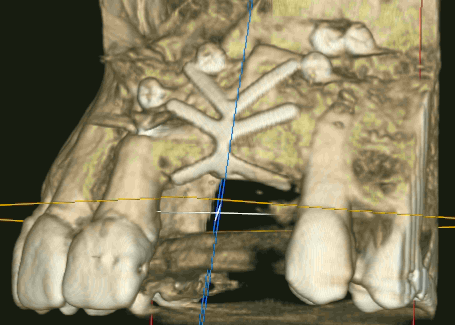CBCT Short Course
This course is aimed for dentists to fulfil the Level 1 and Level 2 (Core) CBCT training criteria set out in the latest Dental Guidance notes and HPA guidelines.

CBCT Level 1 Course Information
Course information
Cone Beam Computed Tomography (CBCT) plays an essential diagnostic and planning tool in general dental practice and hospital dentistry. This Level 1 course aims to help participants fulfil their legal and ethical responsibilities for the referral of patients who require CBCT. This course follows the training criteria published in the latest UK Dental Guidance Notes.
This course is led by Baghy Batchu, an experienced specialist in Dental Radiology. This course is a prerequisite for completing the Level 2 CBCT Interpretation course.
Location: Bristol Dental School
Date: Thursday 20th March 2025
Time: 09:00 - 17:00
Cost: £225
Course Requirements: This course is suitable for Dentists who have attended an IRMER course within the past five years.
CPD hours: 7 hours
Level 1 and Level 2 CBCT Course Information
Course information
This course is designed to train dentists to interpret and report on CBCT scans limited to the dento-alveolar to enable them to use them in their everyday practice. This course teaches the hands on skills required to assess and interpret CBCT scans using CBCT software.
This course is led by Baghy Batchu, an experienced specialist in Dental Radiology. Level 1 CBCT training is a prerequisite for completing the Level 2 CBCT Interpretation course.
Location: Bristol Dental School
Date: Thursday 13th March 2025
Time: 09:00 -17:00
Cost: £395
CPD hours: 7 hours
Course Requirements: This course is suitable for Dentists who have attended an IRMER course within the past five years and hold a CBCT Level 1 certificate.
Learning Outcomes for Level 1 and Level 2
Please select the below to discover the learning outcomes for each level.
- Understand CBCT equipment and how it works (Radiation Physics)
- Learn differences between CBCT, 2D imaging and CT including radiation doses
- Understand radiation protection, dose optimisation and factors affecting the image quality and radiation dose
- Decide what scan parameters to select based on the clinical scenarios
- Understand the responsibilities of the CBCT referrer, practitioner, operator and legal person
- Uses and limitations of CBCT imaging
- Recognise the common artefacts and their clinical significance
- The 3D anatomy of the teeth and the surrounding bone
- Who should provide a radiological report
- How to structure a good radiology report
- The 2D and 3D anatomy of teeth and jaws
- The normal variations of the vital structures and their clinical significance
- Dental Pathology – uses and limitations of 2D and 3D imaging
- A systematic approach to the interpretation of radiolucencies, radiopacities and max-illary sinus findings
- The significant clinical and radiological findings and when to refer
- Use of CBCT scan software and image manipulation – hands on experience
- Structured approach to write a good radiology report – hands on experience
